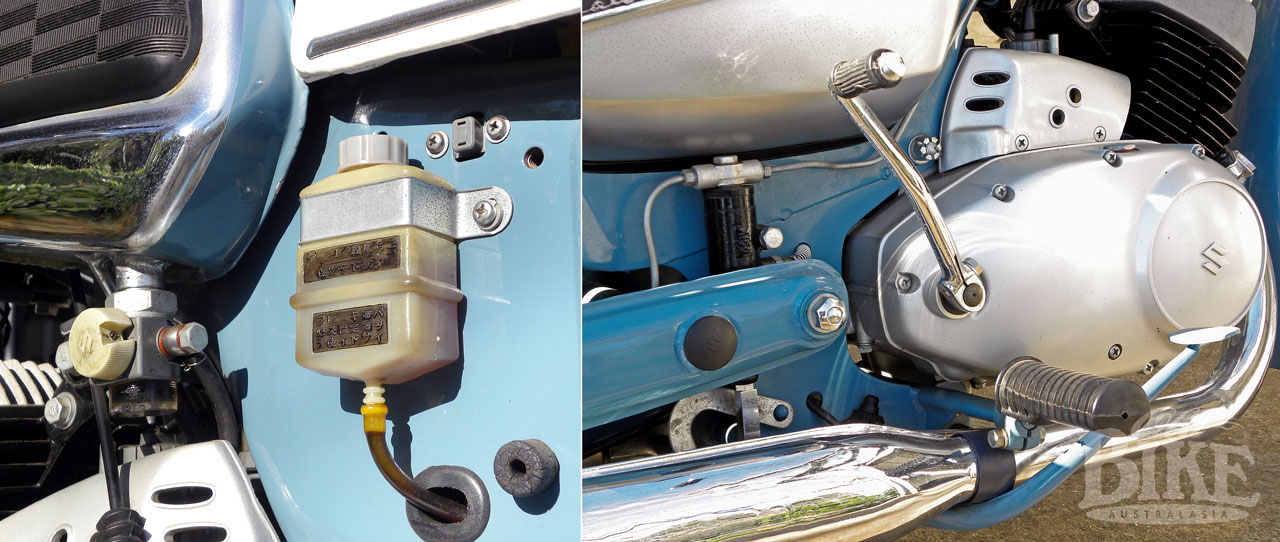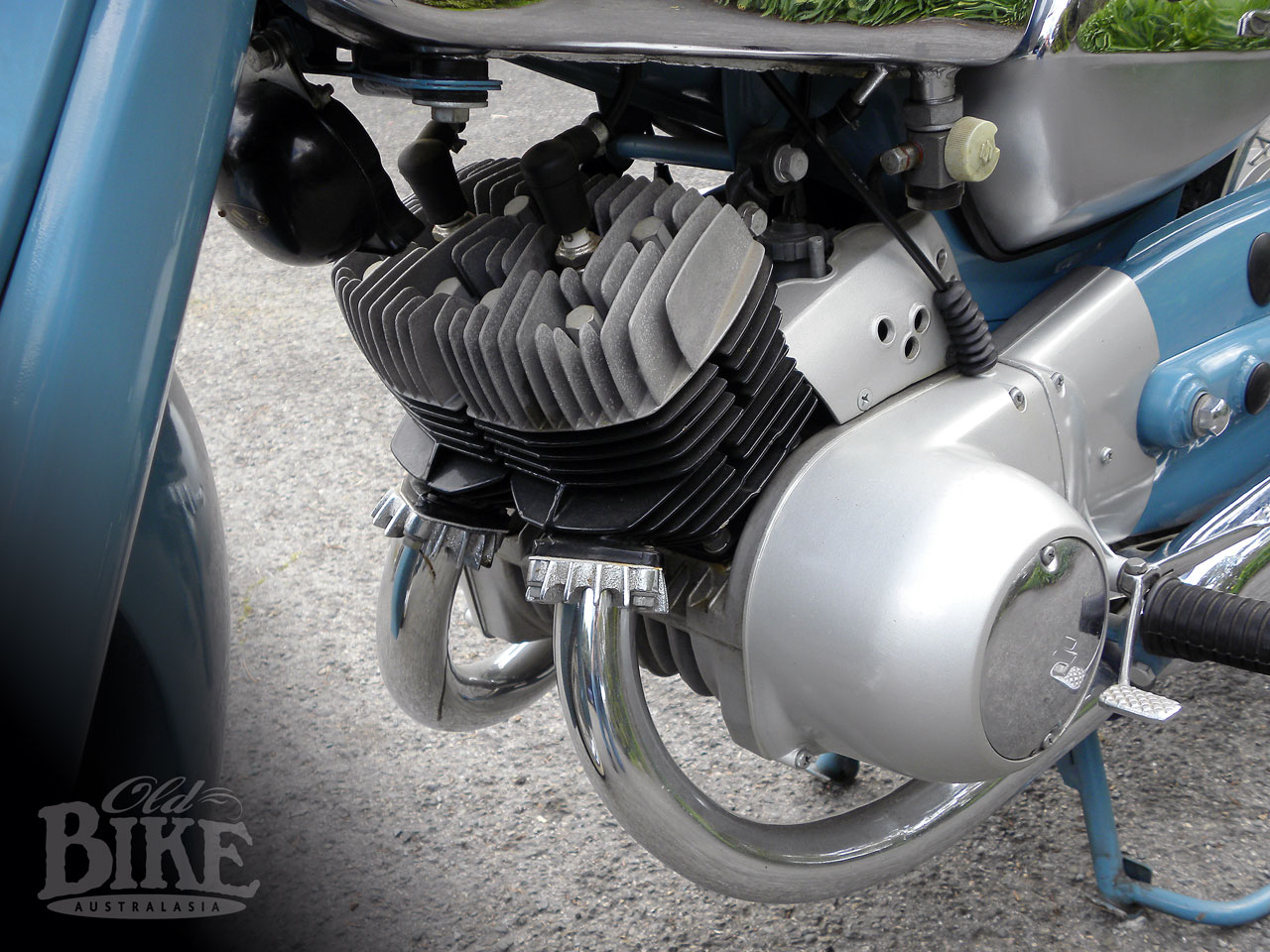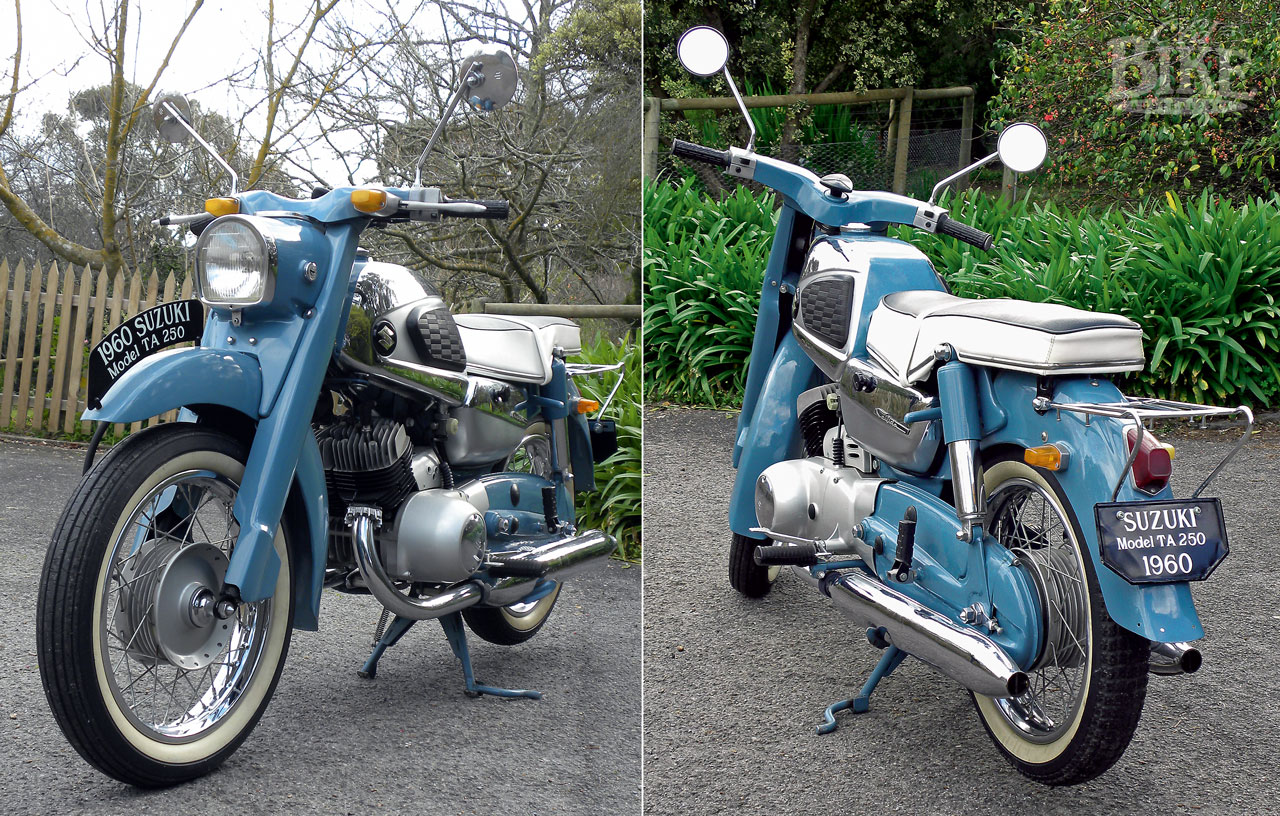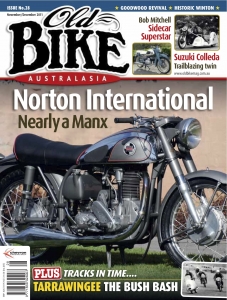
Australian motorcycle buyers of the 1950s and ‘60s were treated to many of the first Japanese offerings with the Colleda TA 250 being one of these now very rare examples.
Colleda is a Japanese word translating to “This is the one” and what better brand name for a range of motorcycles launched into the Japanese market by SJK, which had started to produce cars in 1937 but in the 1950s had changed to mopeds and small capacity motorcycles. In 1955 SJK decided to move into the very competitive 250 cc market with the Colleda TT reputedly being the first 250 cc two-stroke twin to be manufactured in Japan. SJK were of course Suzuki Jidosha Kogyo (Suzuki Automotive Manufacturing) who, being unsure of their future, branded their motor-bikes as “Colleda” (not Suzuki) with “SJK” embossed into engine castings. They had already incorporated the distinctive horse-shoe shaped head-light and in 1958 with a clearer corporate path and branding strategy, the Suzuki Motor Company came into existence and the now familiar “S” was born along with the “Suzuki” brand.

To promote Suzuki’s new marketing strategy and export business that commenced in 1960, an outstanding model bearing the Suzuki name was required. A large team designed the Suzuki Colleda 250 TA (Twin Ace) to showcase innovation and the distinctive Japanese style. For marketing reasons the Colleda brand still existed in Japan, with only motorcycles for export markets branded as Suzuki, and with Colleda as just a model name to link the bike with its heritage.
In 1960, the South Australian Suzuki agent, Taylor Marine and Sports Centre of 153 Grenfell Street, Adelaide, unpacked one of the first shipments of the Suzuki Twin Ace. An advertisement of the time said “A great double – 250cc for £250” ($500). Apart from Australia, only 12 TAs were delivered to Europe (Belgium) and a similar quantity to the US making this motorcycle exceptionally rare. It would have been a brave buyer who purchased this completely unknown and unfamiliar make.

This Suzuki is the ultimate example of the unique and distinctive styling of Japanese motorcycles of the late 1950s. Construction of the TA was typical of the period having a pressed metal frame and bodywork, with the motor an attachment. Designers at Suzuki achieved their goal with the TA being very different to the earlier Colledas in styling, engine and braking system. When the rest of the world were using independent cable or rod actuated brakes, the Suzuki TA was fitted with hydraulically operated single leading shoe drum brakes. Linked together with a bias of 60% to the front brake and 40% to the rear brake, they were operated by the foot brake. However should the rider wish to exert more braking pressure on the front brake, it could also be operated independently by the hand brake which was a cable over-ride. Whilst the system was effective and received good reviews, the TA was the only model to use it with later models (TB, TC, T10) using a cable-operated front brake and hydraulic rear brake.

Whilst most Suzuki 250 engines had a bore and stroke of 54 mm x 54 mm, the Twin Ace had a touring motor configuration of 52 x 58. The powerful electrical system necessitated fitting the spark plug caps with high frequency “noise” arrestors to suppress any radio and TV interference the bike may cause; another world first. One feature that riders found difficult to adjust to was the rotational gear selector, meaning a rider could just keep depressing the heel-toe gear lever in one direction to keep changing gears. This allowed a rider to change from fourth gear to neutral to first gear and although beneficial in traffic it could inadvertently cause a difficult situation if travelling at speed.

When the turn-indicators were used, a buzzer sounded to alert the rider of their operation. The tool kit included an optional extra of a “repair” light, being a torch-like device attached to two metres of cable that plugged into a socket in the tool-box. A rear carrier came as standard fitment, as did white wall tyres and a fuel gauge consisting of a clear tube on the petrol tank. Options included leg guards and a windscreen which could be fitted into holes in the handlebar. Both side covers had Colleda badges attached and the Suzuki “S” was branded into bolts, covers, rubber parts and even the horn. Suzuki was trying to make a statement.
Pressed metal forks containing the leading link suspension were a prominent feature of the classic 1950s Japanese style and to create the same illusion the TA’s telescopic forks were enclosed in stylish pressed metal shrouds. Metal covers enclosed the handlebars and head-light and the front mudguard was a large semi valanced unit. All of these features were deleted on the next model (TB). To accommodate the large chain case, the lower mounting point of the rear suspension units had to be mounted above it, so the top mounting points were on special brackets that protruded up into the seat.

Quality and finish were of the highest standard and the engine proved to be very robust. A long term road test of the day said, “It would start with less fuss and transport us around in more comfort than almost anything we had available including a couple of cars. Most of all, it was a lot of fun.” Manufacture of the Suzuki TA Twin Ace lasted for two years (1960/61), but this model had a very significant place in motorcycling history as it launched Suzuki to the world and was the first 250 Suzuki and the last 250 Colleda,

The Suzuki Colleda TA featured is owned and has been authentically restored by Mick Bulman.
Suzuki Colleda TA 250: Specifications
Engine: Twin cylinder, air cooled, two stroke
Capacity: 246cc (52 bore x 58 stroke)
Starting System: Electric start
Carburettor: 2 x 20 mm Villiers Mikuni
Lubrication: Premix; 1 oil: 15 petrol
Tyre size: 3.25 x 16
Front suspension: Telescopic forks
Dry Weight: 148 Kg
Max HP: 18 @ 7,000 rpm
Max Speed: 130 kph
Fuel Consumption: 45 km/Lt
Story and Photos: Geoffrey Ellis


